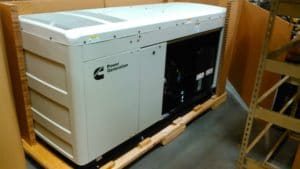Community Microgrids Bypass Aging Infrastructure
 One way in which people are bypassing the United States’ aging infrastructure is the implementation of microgrids. A community microgrid has many additional benefits beyond simply providing a more reliable power source for a local town or city; community microgrids also give consumers more control over what type of power is being manufactured, like solar power or wind power. In fact, with localities looking for more ways to provide dependable power and the rise of the community microgrid, cities like Chicago have utility-scale microgrids in the works with the help of a grant from the U.S. Department of Energy. Studying this utility-scale microgrid will provide better insight into how to provide secure power, even during times of extreme weather or cyber attacks.
One way in which people are bypassing the United States’ aging infrastructure is the implementation of microgrids. A community microgrid has many additional benefits beyond simply providing a more reliable power source for a local town or city; community microgrids also give consumers more control over what type of power is being manufactured, like solar power or wind power. In fact, with localities looking for more ways to provide dependable power and the rise of the community microgrid, cities like Chicago have utility-scale microgrids in the works with the help of a grant from the U.S. Department of Energy. Studying this utility-scale microgrid will provide better insight into how to provide secure power, even during times of extreme weather or cyber attacks.
So what exactly is a community microgrid? This type of microgrid is one designed specifically to service a designated town, neighborhood or city. According to CarbonTRACK, “the focus of this type of microgrid is to pool local resources (mainly small-scale renewables) to maximise energy self-reliance.” By utilizing local power generation and distributing to nearby homes and businesses, community microgrids avoid many issues that the main grid runs into. Sometimes community grids are even connected to the main grid to add further protection against power loss.
Reasons to Install a Community Microgrid
Why do communities choose to install microgrids? There are a number of compelling reasons a community might choose to do so. These reasons include:
- Renewable Resources: Community microgrids allow for more environmentally friendly sources of energy, such as wind or solar power, to be utilized. Harnessing these types of power helps to reduce a community’s carbon footprint.
- Reliability: With the increase of power outages across the country due to an aging infrastructure, smaller-scale microgrids add a more fail-proof source of energy for communities to rely on.
- Affordability: When designing microgrids, communites have many options that can make for more affordable energy. For example, the choice in type of power being sourced means a range in pricing. Microgrids may make use of traditional generators to generate power or as a way to back up the grid and make it more reliable; by buying used generators, unit prices are dramatically lowered saving lots of money on the investment.
By installing a community microgrid, power loss can be prevented in a more environmentally friendly and affordable way, providing a sense of security and emergency readiness for homeowners and businesses in the area.

